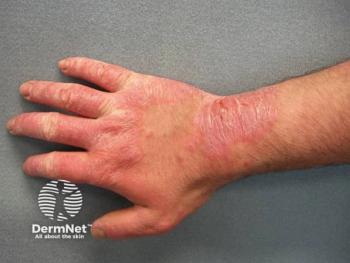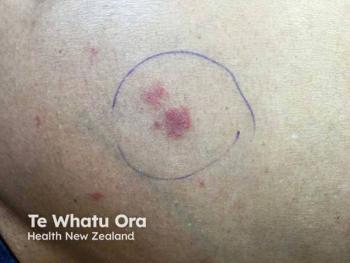
Incorporating Patient Preference in a 42-Year-Old With Atopic Dermatitis
An expert discusses how patient preferences, particularly needle anxiety, must be balanced with treatment effectiveness, demonstrating that oral JAK inhibitors can be excellent alternatives for patients who cannot tolerate injectable biologics.
Episodes in this series

Video content above is prompted by the following:
This case exemplifies the critical importance of aligning treatment recommendations with patient preferences and psychological factors to ensure successful therapeutic outcomes. The 42-year-old florist presented with occupational impact from hand involvement, representing a high-impact, low–body surface area scenario that warranted systemic therapy consideration. Her previous nonadherence with injectable dupilumab due to needle anxiety highlights a common barrier affecting 20% to 30% of adult patients, demonstrating that even highly effective treatments can fail without addressing patient-specific concerns and preferences.
Needle phobia and injection anxiety represent significant obstacles to biologic therapy adherence, requiring health care providers to explore alternative treatment modalities or implement anxiety reduction strategies. The availability of oral JAK inhibitors provides excellent alternatives for patients unable or unwilling to use injectable therapies. Treatment decisions must balance clinical efficacy with practical considerations, including housing stability, travel requirements, and medication storage needs, particularly for biologics requiring refrigeration. Patient lifestyle factors and occupational demands should heavily influence treatment selection to optimize both clinical outcomes and quality-of-life improvements.
The comparative effectiveness of oral JAK inhibitors vs biologic therapies demonstrates that both treatment classes offer excellent efficacy and safety profiles for appropriate patients. JAK inhibitors may provide faster symptom relief, which can be particularly beneficial for patients experiencing significant functional impairment. However, patient selection requires careful consideration of individual comorbidities and risk factors. Comprehensive safety discussions about JAK inhibitor black box warnings, derived from studies with different medications and patient populations, help patients make informed treatment decisions while maintaining confidence in their prescribed therapy.
Newsletter
Like what you’re reading? Subscribe to Dermatology Times for weekly updates on therapies, innovations, and real-world practice tips.




















